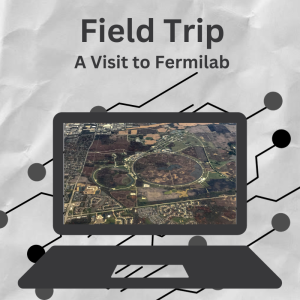Trip Report: A Research Visit to Fermilab
By Nik Sultana, Illinois Institute of Technology
I am an assistant professor of computer science at Illinois Institute of Technology, where I work on developing cutting-edge techniques in computer networking and applying them to solve problems in other scientific fields and cybersecurity. During summer 2023 I had the good fortune of visiting Fermilab, the United States’s renowned research facility dedicated to high-energy particle physics and particle accelerator laboratory, to work on research. The research investigated how new computer networking techniques can support the science that’s being done at Fermilab. Temporarily transplanting my work to a different research environment helped generate new research ideas, and taught me a lot about working with scientists in research areas outside of computer networking.

Fermilab’s goal is to understand the fundamental particles that make up the universe. To do this, it carries out experiments that involve a lot of energy and generate vast quantities of data. Once generated, this data needs to cross one or several computer networks to reach computers that analyze and store this data. To give you an idea of how much data is involved, we’ll look at Fermilab’s DUNE experiment – or, for its full name, the “Deep Underground Neutrino Experiment”. This experiment is due to come online during the next few years, and at its peak, it’s expected to generate an equivalent amount of data to 3750 simultaneous movie streams at 4K. Annually, it is expected to generate more data than 1.7 million 4K movies. In comparison, the largest streaming services offer fewer than 15 thousand movies. And each time you re-watch a streaming movie, you’re watching the same movie as before, but Fermilab’s data changes continuously – as if it’s playing a different movie every time.
My research during this visit is about how computer networks can better serve the Fermilab scientists’ experiments . By their nature, computer networks are simply a means to an end. Information only enters the network in order to leave it — as quickly as possible. In other words, interesting things don’t usually happen in the network, they happen on devices connected to the network. For example, in a movie streaming scenario, there is a device (a server) in the network that sends the movie, and another device (such as a tablet, phone, or computer) that receives it. The network simply transfers the movie between the two devices.
Over the summer I worked alongside my fantastic collaborators at Fermilab to develop the following research hypothesis: the network can do more than simply move data between devices for Fermilab’s experiments. Specifically, modern network equipment and programming techniques can be used so the network processes that data while it is traveling. This can have several benefits, including reducing the time to react to interesting events in the data, reducing the processing load on servers at the receiving end, and reducing the power needed to process the same quantity of data. We’re working to pin this down to what specific benefits so-called “in-network computing” can bring to Fermilab’s experiments.
We’ve written some initial research findings and presented a poster during Fermilab’s 56th Annual Users Meeting at the end of June. We’re now working on developing this further – if you’re interested in doing research on this topic towards a PhD, do get in touch!
In our day-to-day life, we usually take the network for granted – it’s there working in the background, and we don’t think about it unless it fails. But in environments like Fermilab’s experiments, the network is not a “solved problem”: there are exciting new dynamics to explore.
This work continued beyond the summer visit and grew to include more people from Fermilab and my research group at Illinois Institute of Technology. During this visit I got to understand and appreciate the fascinating scale of scientific experiments at Fermilab, and how people from different academic disciplines collaborate to realize those experiments. A deep collaboration between engineers and scientists is necessary since many of an experiment’s equipment and instruments are custom-built. Even the scientists and engineers typically have different specialist knowledge, which they bring to the collaboration. You can get a sense of the large scale of experiments purely by their duration and their physical sprawl. Getting to see this firsthand was fascinating and helped direct the focus of the work with my collaborators.
Acknowledgments:
I thank my research collaborators Sean Cummings and Nishanth Shyamkumar from Illinois Institute of Technology, and Ryan A Rivera, Michael H Wang, and James B Kowalkowski from Fermilab. I also thank Casey Moffitt at IIT and Denise Hernandez at C2ST. This research visit was made possible by the URA Visiting Scholars Program Award #23-S-22.
Sources:
- You can find out more about the type of computers used for analysis by reading this article by students at Illinois Institute of Technology: https://www.c2st.org/unveiling-the-powerhouses-of-supercomputing-exploring-supercomputers-and-their-enigmatic-world/
- https://lbnf-dune.fnal.gov